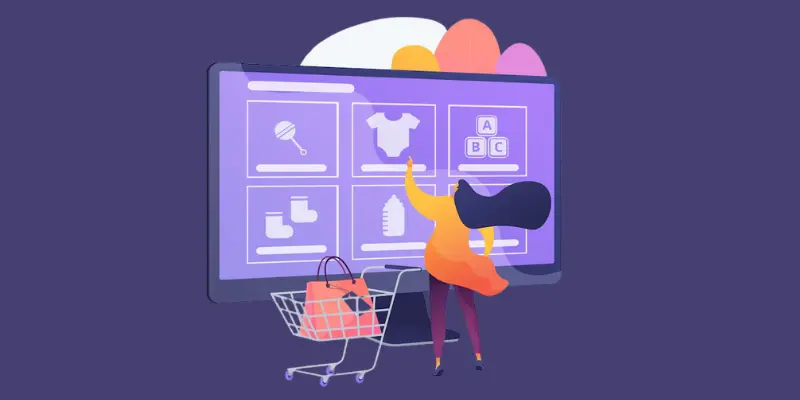Are you ready to upgrade your creative business idea into a successful online marketplace but find yourself stoned by the stress of increasing prices? If yes, you are not the only one. Many entrepreneurs face this difficult challenge, but here’s the good news: understanding and handling the costs of establishing an online marketplace doesn’t have to be stressful. In fact, with the proper knowledge and strategic planning, you can transform this financial uncertainty into a powerful advantage.
Picture this: You’ve effectively launched your online marketplace, and it’s bustling with activity, generating revenue, and growing faster than you expected. How did you get here? By making informed decisions about every dollar you spend. This blog post is your friendly guide to analyzing and breaking down the costs involved in creating an online marketplace and provides you with a clear roadmap to make sure you invest wisely and efficiently.
In the next few minutes, you’ll gain valuable data and insights into the key factors that affect the online marketplace development cost, including platform choices, design, and essential features. You’ll discover the true cost breakdown for online marketplaces.
By the end of this guide, you’ll have the tools and knowledge to tackle your marketplace project with confidence and clarity, setting yourself up for success without the tension of concealed costs and unexpected barriers. Let’s dive in and transform your marketplace vision into a profitable reality!
Understanding Online Marketplace
A marketplace is a digital bazaar operating on a web platform or application, enabling users to access services and purchase products from various brands or a single provider. It serves as a centralized hub where consumers can explore a wide range of offerings, compare prices, and make informed decisions.
This digital marketplace generates revenue through three distinct categories:
B2B Marketplace Business Model
In a B2B marketplace, revenue is mainly generated through transaction fees, subscription fees, and listing fees. The platform earns transaction fees from each trade, usually as a percentage of the transaction amount. Subscription fees come from businesses that pay for premium services. Sellers pay listing fees to post their products or services.
B2C Marketplace Business Model
For B2C marketplaces, transaction fees, advertising, and premium listings help generate revenue. Sellers pay transaction fees on each sale to consumers. Advertising fees are charged to sellers and brands that want to promote their products prominently. Premium listings allow sellers to pay for enhanced visibility or featured placement, increasing their chances of making sales.
C2C Marketplace Business Model
C2C marketplaces generate revenue through transaction fees, listing fees, and optional services. Transaction fees are charged on sales between consumers while listing fees apply to individuals wanting to post items for sale. Additionally, optional services such as enhanced listing features, promotional tools, or transaction protection can provide additional revenue streams.
Developing an online marketplace helps sellers benefit from increased market reach, reduced overhead costs, and access to a larger customer base without the need for extensive marketing. A successful marketplace provides them with tools to enhance visibility, streamline transactions, and attract targeted buyers.
At the same time, buyers enjoy a wide variety of products or services, competitive pricing, and convenience from a single platform. Successful marketplaces offer robust search features, user reviews, and secure payment options, ensuring a positive purchasing experience.
Key Factors Affecting The Cost
Choose Platform: Saas Solution Vs Custom Built Solution
Custom-built Solutions:
-
-
Costs: Initial development costs for custom-built solutions are typically high due to the need for a specialized custom web development company with seasoned engineering teams, advanced design, and high-tech infrastructure setup.
-
Benefits: Tailored to specific business needs, offering unique features and complete control over the platform. This can provide a competitive edge and flexibility for scaling and adapting with long-term support and proper guidance.
-
Drawbacks: higher upfront investment and slightly longer development time.
-
SaaS Solutions:
-
-
Costs: Saas marketplace solutions costs are generally lower due to their common software with a subscription-based model, making it easier to budget.
-
Benefits: Quick deployment, regular updates, and access to the latest features without additional costs.
-
Drawbacks: Limited customization options and reliance on third-party providers. Potential concerns over data ownership and security.
-
Choosing the right platform—whether custom-built or SaaS—significantly impacts marketplace development and operational costs and also affects long-term success and ROI. Custom solutions offer control and uniqueness, significantly provide high returns as compared to SaaS, and are highly trusted but require substantial investment. In contrast, SaaS solutions provide cost efficiency and ease of use.
Features and Functionality: Basic vs. Advanced Features
-
-
Basic Features:
-
These are the core functionalities necessary for a platform to operate. They include user authentication, product or service listings, search and filtering options, a shopping cart or booking system, secure payment processing, and customer support. These features ensure a smooth, functional experience for users, providing the necessities to engage with the platform effectively.
-
-
Advanced Features:
-
Advanced features go beyond the essentials to enhance the user experience. These may include personalized recommendations, advanced analytics, multi-language and multi-currency support, AI-powered chatbots, social media integration, detailed user reviews, and loyalty programs.
Investing in key features, especially advanced ones, can transform a platform from merely functional to extremely engaging. Such features not only meet basic needs but also satisfy users, creating memorable experiences This superior user experience can make users feel valued and understood, encouraging them to return. Ultimately, investing in advanced features isn't just about technology; it's about creating a human-centered experience that relates to users, driving long-term success and growth.
Design and User Experience: Custom Design Vs Template Design
-
-
Custom Design:
-
Custom designs have a higher cost as they are built from scratch, provide high flexibility in design, are customized and upgraded as per user needs, and offer significantly more convenience in customized web development tailored to your specific business. This can result in an enhanced user experience and satisfaction. Additionally, they allow for unique branding opportunities that can set your marketplace apart from competitors and can be optimized for performance.
-
-
Template Design:
-
Template designs are cost-effective due to their pre-built standardized layouts and specific frameworks with functionalities. They enable quick deployment, allowing businesses to go live faster. Additionally, templates often come with built-in support and updates. While they may lack the uniqueness of custom designs, templates can still be customized to a certain extent to reflect your brand's identity.
Template designs are ideal for quick deployment and simple websites, making them perfect for public affairs teams needing rapid responses. You can hire dedicated developers who can help you use these templates easily.
Custom-built websites offer greater flexibility, expansion, and long-term benefits, making them suitable for organizations expecting growth, frequent updates, or requiring comprehensive functionalities. They are best for large, complex websites with sensitive data. It also boosts marketplace credibility by including unique branding elements that build trust and professionalism
Technological Stack: Open Source Software VS Licensed Software
Open Source Software:
-
-
Costs: Most open-source software is free to use because there are no license fees to pay. However, organizations often have to pay for development, new ideas, help, and infrastructure expenses over a long period.
-
Benefits: Even though it costs money, open-source software has a lot of great advantages. One of the biggest benefits is that the software can be changed and tailored to specific needs. A lot of open-source projects also have a large and busy community that offers a lot of resources, support, and comments that can be very helpful for fixing problems and making the software better. For companies with the necessary skills and resources, open-source solutions can result in a lower total cost of ownership.
-
Licensed Software:
-
-
Costs: Licensed software usually includes a more significant upfront investment, including a base fee for the software itself. Additional costs may come from merging services, upgrades, and yearly licensing fees. These ongoing costs can add up, making leased software a more expensive choice over time.
-
Benefits: One of the most important is access to specialized, professional help from the software company, which can be crucial for businesses without extensive technology knowledge. Licensed solutions are often created in a controlled and secure setting, lowering the risk of security flaws.
-
When deciding between open-source and licensed software, consider your team's skills and IT tools. Open-source software offers cost savings, freedom, and a creative community, making it ideal for companies valuing creativity. The vast open-source community often offers solid answers. Whereas, licensed software provides pre-built solutions for your business, which can reduce marketplace maintenance costs as these are maintained by the source company and lower the risk of security.
Scalability and Performance
Project Scope Considerations:
The size of the project greatly impacts prices. Starting with an MVP (minimum viable product) with basic functions is more cost-effective than building the full idea. This method allows for lower prices and incremental growth. However, ongoing costs for storage, upkeep, and future updates should be planned for post-launch. Building scalability and freedom from the start can help reduce long-term costs and ease future growth.
Future Trends:
Future trends, like AI for traffic control, will improve performance and cost efficiency. Early investment in scaling avoids speed problems and supports a good user experience. Investing in flexible solutions can save costs long-term by allowing growth without major hurdles.
Cost Breakdown For Online Marketplace Development
Platform Development Costs:
Custom Development vs. SaaS:
Custom e-commerce marketplace development offers a tailored solution but at a higher cost. This route can range from $30,000 to $250,000, depending on the complexity and features. In contrast, SaaS marketplace software costs are more affordable, with subscription fees typically ranging from $100 to $2,000 per month. While SaaS provides quicker deployment and lower upfront costs, custom development offers greater flexibility and scalability, which can be crucial for unique business requirements. Investing in a skilled development team can lead to a higher-quality product, ensuring that the platform is robust, scalable, and user-friendly. A well-executed marketplace can provide a seamless experience, which is important for attracting and retaining users.
Designing and Branding Costs:
UI/UX Design:
The cost of UI/UX design varies based on whether the design is custom or template-based. Custom designs are tailored to the specific needs and branding of the marketplace, costing between $5,000 to $30,000 or more, depending on complexity. Template designs, while more affordable (ranging from $500 to $5,000), may lack uniqueness and customization, potentially limiting the platform's ability to stand out.
Branding:
Branding is a crucial aspect of establishing a marketplace's identity. Costs can include logo design, color schemes, and other brand elements, typically ranging from $1,000 to $10,000. A strong brand identity not only differentiates a marketplace from competitors but also helps build trust and recognition among users. A well-designed brand identity can attract and retain users by creating an emotional connection. It communicates the marketplace's values and promises, fostering loyalty and encouraging repeat usage. Consulting with a custom web development company can help you prepare robust marketplace design and development pricing strategies.
Hosting and Maintenance Costs
Hosting Plans
Hosting options vary from shared to dedicated hosting, with costs dependent on the level of service and resources required. Shared hosting is cost-effective, starting at $5 per month, but may not handle high traffic volumes. Dedicated hosting, which provides maximum performance and security, can cost $100 to $500 per month or more.
Maintenance
Regular maintenance is important for ensuring the platform's smooth operation. This includes updates, security patches, and server management, with costs varying based on the platform's complexity and the level of support needed. Monthly maintenance costs can range from $500 to $2,000 or more. Planning for ongoing maintenance is essential to avoid unexpected expenses and downtime, which can negatively impact the user experience and business reputation.
Marketing and Launch Costs:
Pre-launch Marketing:
Building awareness before launching a marketplace involves SEO, content marketing, and social media engagement. SEO services can cost between $500 and $5,000 per month, depending on their scope and competitiveness. Content marketing, including blog posts and videos, may range from $1,000 to $5,000 per month.
Launch Costs:
Promotional campaigns and partnerships with influencers are effective for a successful launch. The cost of promotional campaigns can vary widely, from a few thousand dollars to over $50,000, depending on the scale and channels used. Partnering with influencers can range from $500 to $10,000 per influencer, depending on their reach and niche. A well-funded marketing strategy ensures a successful launch by creating buzz, attracting initial users, and establishing the marketplace's presence in the market.
Ongoing Operational Costs:
Customer Support:
Providing reliable customer support is crucial for user satisfaction. Costs can include helpdesk software, ranging from $50 to $500 per month, and staff salaries, which vary based on location and expertise.
Regular Updates:
Ongoing tech support and enhancements are necessary to keep the platform up-to-date and competitive. This can include adding new features, improving existing ones, and addressing security issues. Costs for these services can range from $1,000 to $5,000 per month, depending on the complexity and frequency of updates. Efficient cost management in operations can positively affect profits. By carefully budgeting and planning for these expenses, businesses can maintain a high-quality platform that meets users' needs and expectations, ensuring long-term success.
Budgeting Tips For Start-Ups
Cost-Saving Strategies:
To lower prices without losing quality, start with an MVP (Minimum Viable Product). Focus on important features and receive customer feedback to make educated improvements. It’s important to carefully partner with an experienced web development company to avoid problems. Limit paid ads early on by focusing on SEO and social media to build organic growth. This can positively affect the required cost to develop a marketplace website.
Cost Management
Effective cost management includes careful planning and tracking of expenses. Start by creating a thorough plan that includes all expected costs, such as development, marketing, and ongoing expenses.
Regularly check and change your budget as needed to ensure that you stay on track. Implementing cost-control measures, such as setting spending limits and tracking financial success, helps avoid wasting and ensures that resources are used efficiently.
Funding Choices
Exploring different funding choices is important for startup growth. Consider options such as personal funds, private investors, and venture capital. Personal savings involve less exterior pressure but can be risky.
Angel investors and venture capitalists give major funds but may expect stock or control in return. Crowdfunding can confirm your idea and raise funds but it requires a strong marketing strategy to draw backers.
To help you start your planning process, use the following checklist:
-
-
Define your spending groups (development, marketing, and management).
-
Research financial choices and choose the best fit.
-
Develop a stepwise plan for product creation.
-
Identify and execute cost-saving methods.
-
Monitor and change your budget regularly.
-
You can do your financial planning for marketplace development by utilizing these strategies, which can help you handle your startup budget effectively, ensuring that you build a high-quality marketplace while planning for future growth.
Future Trends and Costs
Market Trends
Changing market trends impact the growth of online shopping. The increase in mobile shopping, higher customer standards for smooth user experiences, and growing demand for personalized services are key trends affecting costs. Marketplaces must adapt to these trends by investing in mobile-friendly designs, advanced data, and personalized features, which can drive up development costs.
Emerging Technologies
Emerging technologies such as artificial intelligence (AI) and bitcoin are changing the world of digital markets. AI can improve user experience through personalized suggestions and apps, but adding these technologies can increase initial development costs. Blockchain offers safe trades and open processes, yet its application can be complicated and costly. Despite the higher upfront investment, these technologies offer long-term benefits, such as better efficiency, security, and user trust, possibly lowering running costs and driving growth.
Looking ahead, the digital marketplace scene offers new possibilities for growth and innovation. By staying updated about new technologies and market trends, you can set your marketplace for success and tap the potential of future improvements. Investing in the right tools and strategies now will not only help you handle costs but also open doors to new opportunities.
Embrace the goal of a thriving marketplace that changes with the times, provides great customer experiences, and leads in innovation. By planning today, you set the stage for a successful and exciting tomorrow.
Conclusion
Creating a successful online store requires careful planning and a clear knowledge of costs. Throughout this guide, we've explored the various factors affecting the cost of creating a marketplace, including design, development, features, and the ongoing support of custom web development services. Each factor plays a crucial role in shaping the end investment needed to bring your idea to life and create your online presence.
Understanding these prices helps in setting reasonable budgets, making informed choices, and avoiding surprise expenses. From market study to feature development, every step needs careful attention to ensure your ecommerce website meets user standards and stands out in a competitive market. Effective planning and smart performance are key to controlling costs efficiently and achieving long-term success.
With proper planning, the right tactics, and expert help, your marketplace can grow and offer significant returns on investment. At JPLoft, we're committed to leading you through every step of development, ensuring that your marketplace not only meets but exceeds your standards, and can help you develop platforms like Amazon, eBay, etc.
Embrace the trip with confidence, knowing that with careful planning and performance, you have the potential to build a successful, powerful online business. Your idea can become a reality, driving growth and success in the digital world.
Bring Your Marketplace Idea into Business With JPLoft
Transforming your marketplace vision into reality requires expertise and the right partner. At JPLoft, we offer custom development tailored to your unique needs. Start by leveraging our insights to refine your idea and understand market demands. Our team members will design a user-friendly platform, develop essential features, and ensure scalability and security throughout the development process.
Implement effective marketing strategies to position your brand and attract users. We provide end-to-end support, from initial consultation to ongoing improvements. Schedule a consultation with us, define your project, and start development with JPLoft. Utilize our resources, including guides and case studies, to support your journey.
Ready to start? Contact JPLoft today and take the first step toward building your custom marketplace!













Share this blog